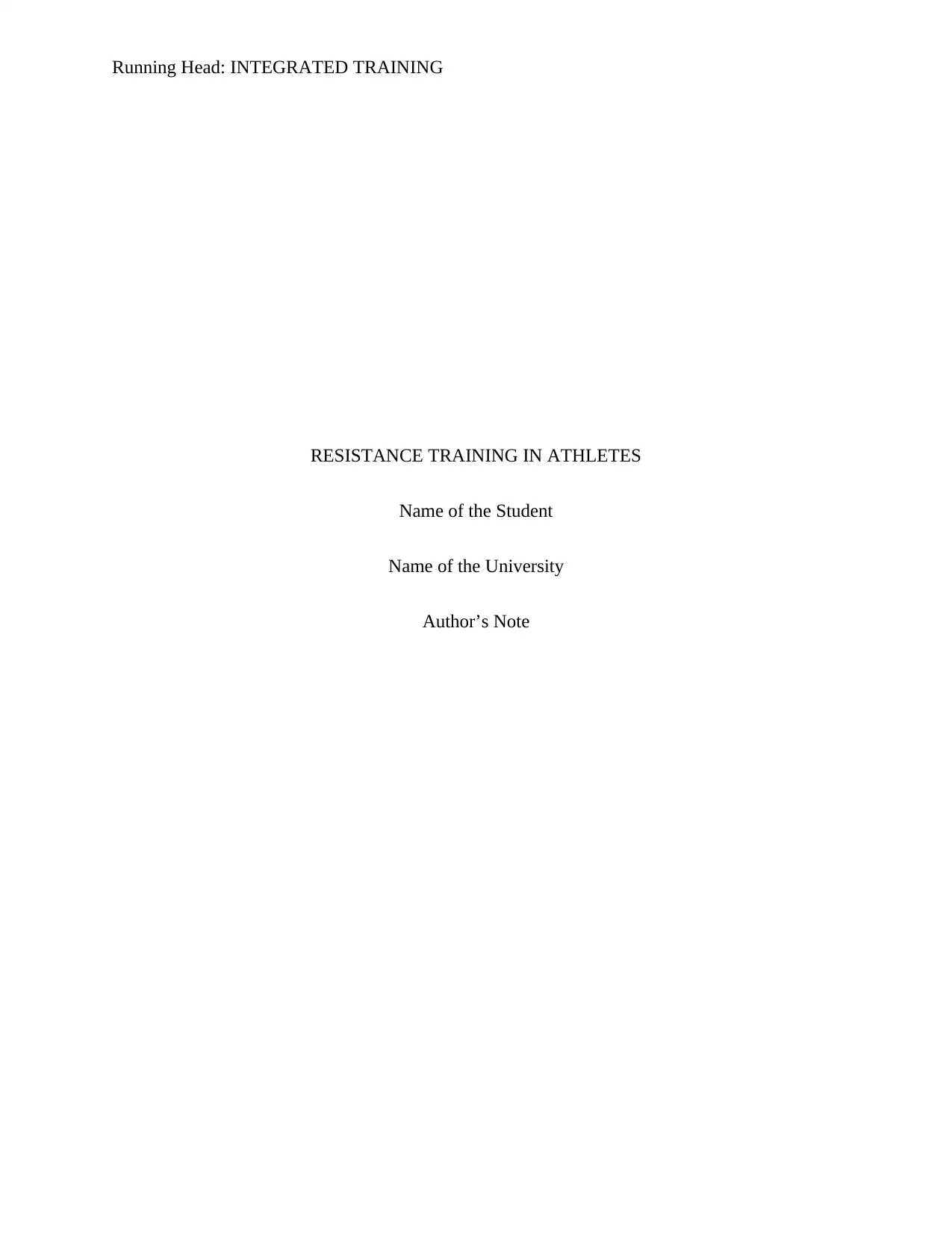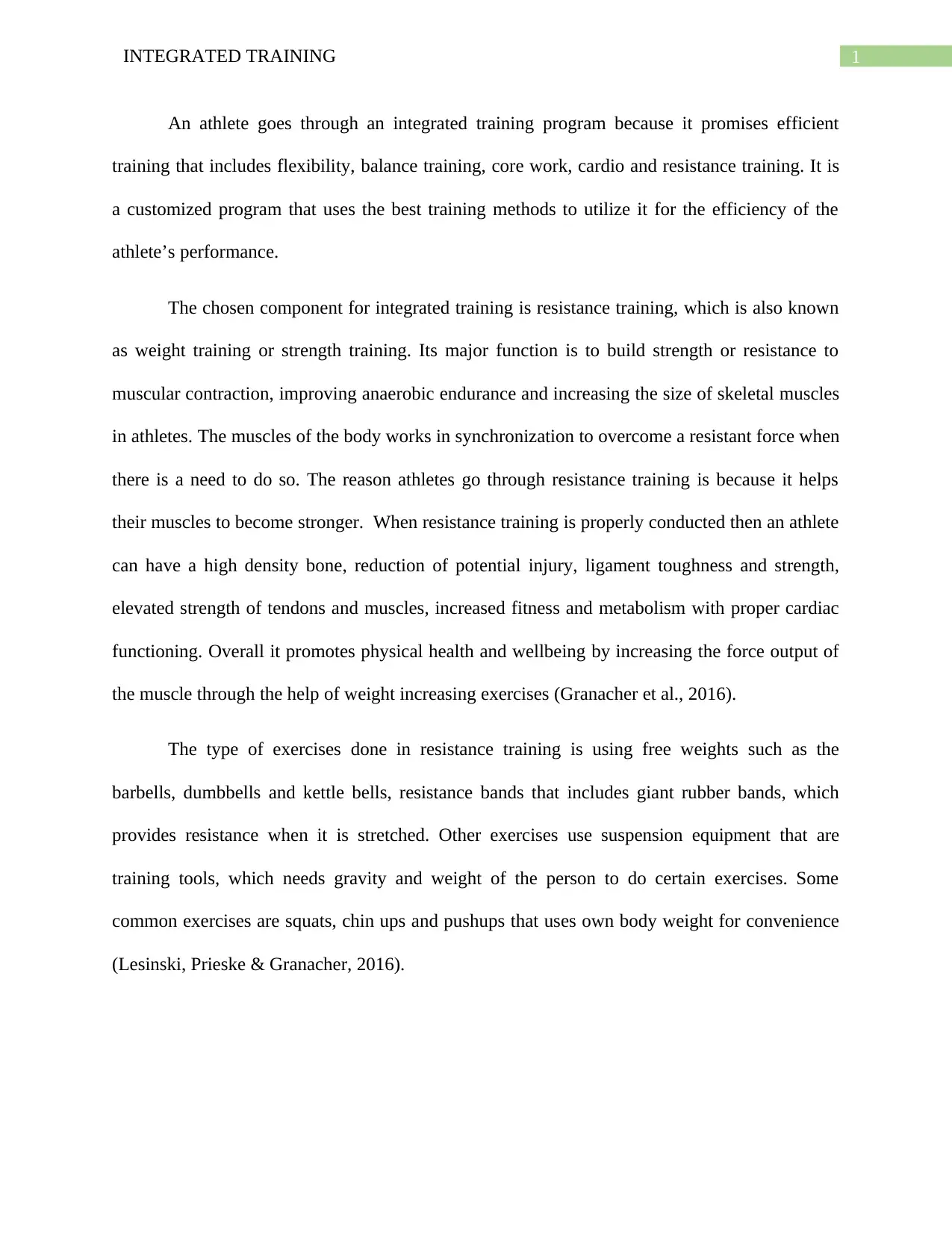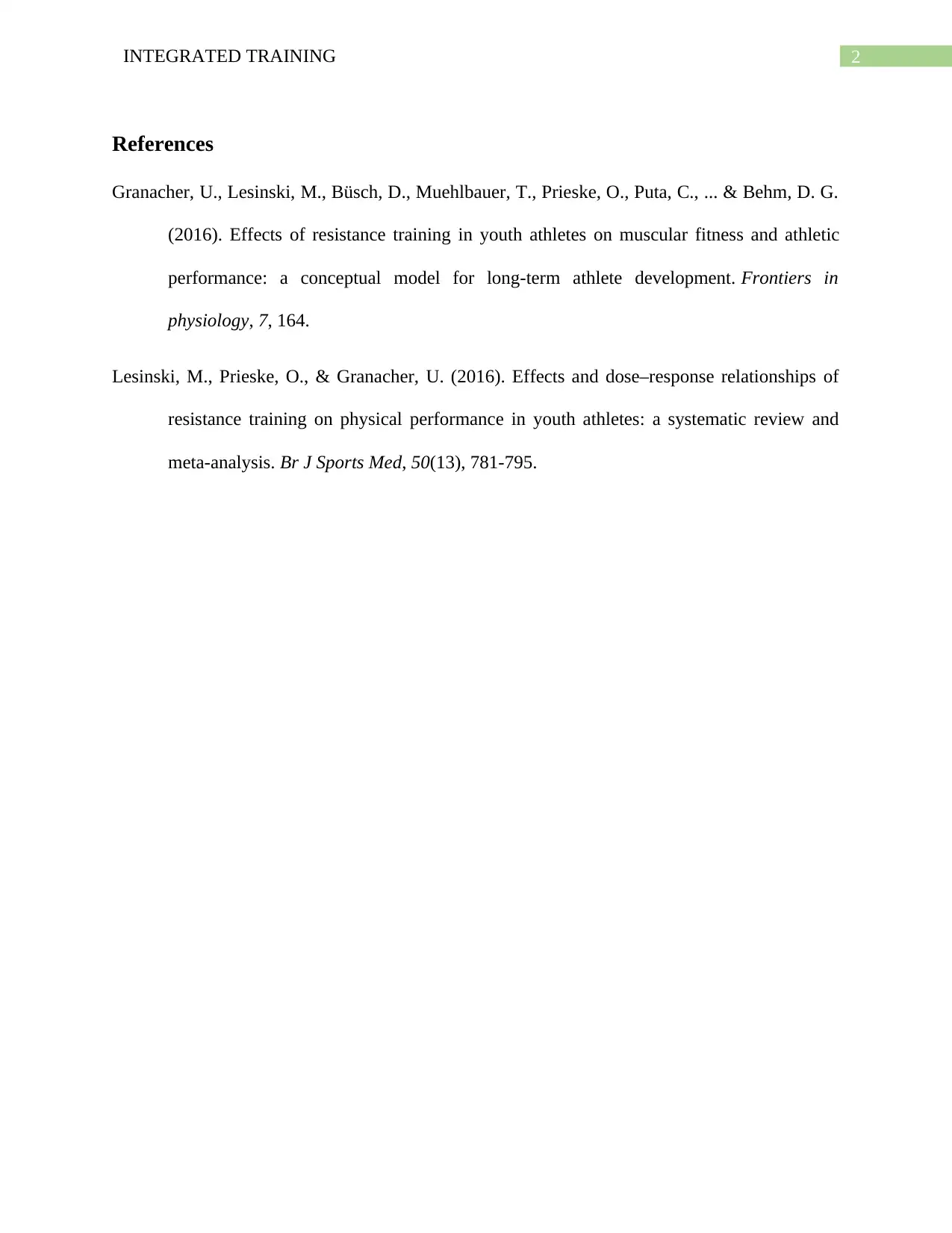The Role of Resistance Training in Integrated Athlete Programs
VerifiedAdded on 2022/08/24
|3
|439
|19
Report
AI Summary
This report focuses on integrated training programs for athletes, with a specific emphasis on resistance training. It highlights the benefits of resistance training, also known as weight or strength training, which include building muscular strength, improving anaerobic endurance, and increasing skeletal muscle size. The report explains how resistance training can enhance athletic performance by increasing bone density, reducing the risk of injury, improving ligament and tendon strength, boosting metabolism, and promoting proper cardiac functioning. It details various exercises used in resistance training, such as free weights (barbells, dumbbells, kettlebells), resistance bands, and suspension equipment, including common exercises like squats, chin-ups, and push-ups that utilize body weight. The report references studies that support the efficacy of resistance training in enhancing athletic capabilities and overall physical health and wellbeing.
1 out of 3










![[object Object]](/_next/static/media/star-bottom.7253800d.svg)